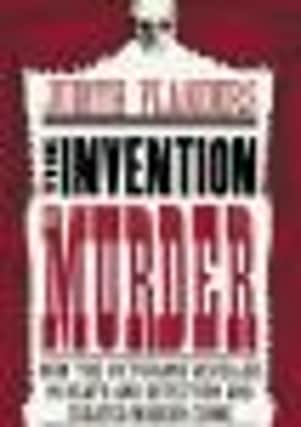Book review: The Invention of Murder by Judith Flanders


How this desire was transformed over the 19th century and how it, in turn, transformed that century is the subject of Judith Flanders’ gripping and gruesome journey through 100 years of stabbing, beating, strangling, poisoning, dismembering and decapitation.
We all know the Victorians revelled in murder and detection, but could it be that they actually created crime as we know it today?
Advertisement
Hide AdAdvertisement
Hide AdYes, asserts Flanders, in a book that is both a compelling compendium of murder and a rich history taking in the creation of the police force, the development of the detective fiction genre and the formative years of the modern world’s own obsession with killing and crime.
Murder, once unknown as a social concept, became an everyday part of 19th century life from novels and ballads to theatre, opera, puppet shows and even performing dog acts.
Detective fiction and the new police force developed in parallel, each imitating the other, women joined the ranks of famous murderers and Jack the Ripper wreaked havoc in London.
It wasn’t always that way.
The start of the 19th century had been relatively uneventful; murder convictions in the London area, and that included all the outlying villages, ran at a rate of one a year.
Advertisement
Hide AdAdvertisement
Hide AdBut the population was expanding, people moved out of their small communities to find work in the cities and neighbours were often strangers to each other.
The cosy feeling that murder was a rarity evaporated on a December night in 1811 when a young hosier, his wife, their baby and a teenage apprentice were slaughtered in their shop in the East End of London.
Twelve days later, it all happened again; a publican, his wife and their servant were killed with what appeared to be the same hammer.
Suspicion fell on a man called John Williams who was arrested but committed suicide in his cell before he could be tried.
Advertisement
Hide AdAdvertisement
Hide AdAssuming that this was an admission of guilt, and despite several anomalies in the case, Williams’ body was laid out on a cart with the murder weapon at his side and paraded through the streets.
The procession ended at the edge of the city where a stake was driven through his heart in a mock execution before a baying crowd and his body tumbled into a makeshift grave.
If nothing else, the seven murders were a stark revelation to politicians that policing in London was woefully inadequate and changes were hastily brought in.
However, there remained a lingering belief that ‘the wicked Part of the Community is becoming too strong for the law’.
Advertisement
Hide AdAdvertisement
Hide AdIn 1829, Robert Peel created the first professional police force, with detectives working specifically on serious crimes, and the stage was set for a century of murder.
Newspapers lapped up high profile cases like body snatchers Burke and Hare, Staffordshire doctor William Palmer who murdered troublesome friends and relatives and middle-class Glasgow woman Madeleine Smith who escaped a conviction for poisoning her secret lover despite some damning evidence.
Many of the greatest literary writers of the century – Dickens and Hardy – were influenced by the trials and subsequent hangings of notorious murderers and the Chamber of Horrors in Madame Tussauds’ waxworks was evidence of the new crime cult.
Our ghoulish interest in what De Quincey termed ‘One of the Fine Arts’ has not diminished and Flanders’ colourful and sometimes satirical book should more than satisfy the ‘blood lust’ of both history and crime fans.
(Harper Press, hardback, £20)